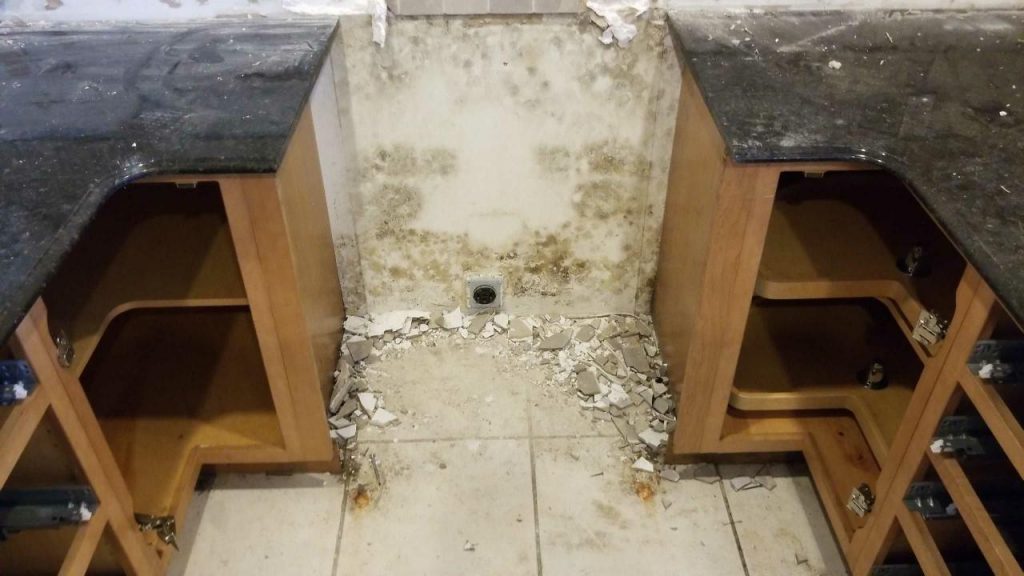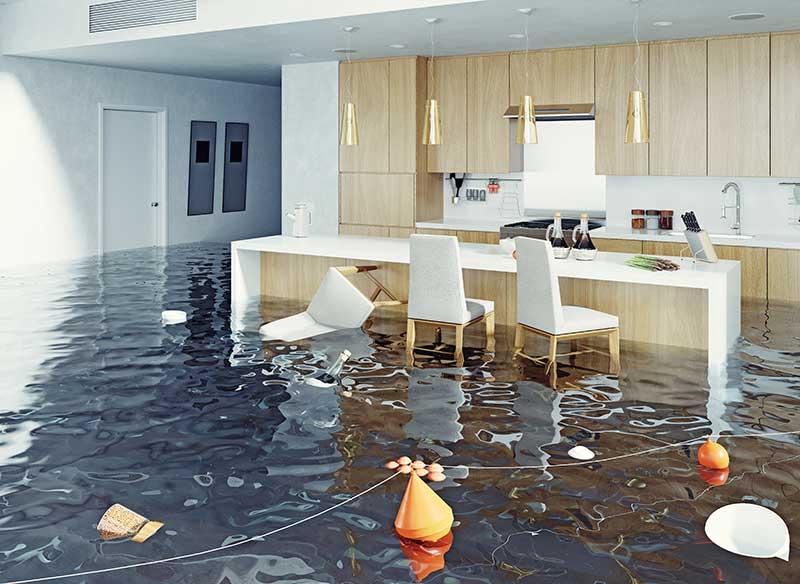Protecting Against Water Damage in the Kitchen
Protecting Against Water Damage in the Kitchen
Blog Article
This post which follows involving Causes of Water Damage in Kitchen is especially insightful. Try it and draw your own personal assumptions.

The kitchen area is the space where a great deal of water task takes place. You can rarely do anything without utilizing water in the kitchen, from cooking, cleaning, and also doing the recipes.
Hence, examining your cooking area every so often is a requirement. This is since it has a higher chance of obtaining water damage as a result of the devices you utilize there.
When malfunctioning, these home appliances that control water could make your cooking area unpleasant as well as impact the structure of your structure in the future.
So, let's have a look at some causes of the water damage in the cooking area and also what you must look out for.
Some Root Causes Of Water Damages in the Kitchen
These are a couple of sources of water damage in the kitchen area.
Faulty Drain Pipes
Drain pipes Pipes are necessary parts of our residences, particularly in our washrooms as well as kitchens. Nevertheless, they get damaged by getting blocked, cracked, as well as burst. Or worse, they can be incorrectly or freely attached; whichever the case might be, it can be a serious problem.
Damaged drain pipes can trigger water damage and also, consequently, create mold and mildew growth and disfigure the look of your wall surface. It can additionally make the afflicted area look unpleasant.
As a result, it is recommended constantly to inspect to make certain that all the pipes remain in good condition as well as obtain a sound pipes system to preserve and also take care of any problems.
Faulty Kitchen Sink
The cooking area sink is an important and a lot of used part of the kitchen. It is susceptible to water damage; problems such as blocked pipes, dripping pipes, and also defective faucets.
These damages can be aggravating, specifically when one is busy in the kitchen area. It does not just happen without providing an indicator or a clue. So below are some signs to know when your sink is not fine
These are the major damages that can happen to your kitchen sink. One method to stop this damage is by ensuring that food fragments do not obtain right into the pipelines. You are likewise inspecting the taps and also pipelines as well as ensuring that it is properly fixed and also in good condition.
Dripping Dishwashing machine
Dish washers make life in the kitchen area simpler. It is an optional cooking area home appliance and, when readily available, can be a resource of water damage. Furthermore, like other equipments, it will certainly establish faults with time, despite maintenance.
One of the mistakes is dripping through the door or under the dish washer. These faults create because of age, cracks, incorrect usage, loose web links to pipes, and so on.
Faults due to age originated from constant use. Because of this, the door leaks due to shutting and opening up.
Also, mistakes from the wrong use may create water damage by introducing cracks to it. It is suggested to follow the hand-operated guide of the dish washer to avoid this particular damages.
The leaks under the dishwashing machine can originate from splits in the gasket, tube, as well as loose or wrong connection to pipes or drains pipes.
This type of leakage usually goes undetected and can be there for a long time. Due to the time frame, it could harm the flooring and also cause mold and mildew growth.
Much more so, the longer the water stays, you will certainly notice the bending of the flooring where the dishwashing machine is. When checking if your dishwasher leaks, this is an excellent indicator to look out for. Spotting and also repairing this on schedule protects against significant water damage to your flooring.
Bottom Line
Watching out for problems in your kitchen can be charging yet required. It makes your work there easier and also more secure.
Nonetheless, the reasons detailed above are just a few variables to take into consideration, especially if your kitchen has a lot of home appliances.
Get an expert pipes service to come around and inspect for any kind of damages and get them fixed.
It makes your kitchen area unpleasant as well as damp, specifically when dripping from the pipelines. And if it is leaking from the faucet, it leads to water wastage.
It is an optional kitchen appliance and, when available, can be a resource of water damage. Extra so, the longer the water stays, you will notice the bending of the flooring where the dishwashing machine is. Identifying and fixing this on time protects against significant water damage to your floor covering.
WAYS TO PROTECT YOUR KITCHEN FROM WATER DAMAGE
The kitchen is one of the most significant rooms in your house, as it is a multipurpose room wherein you can do your cooking and cleaning. Nowadays, homeowners tend to ignore the problems under their sink or appliances because of their busy schedules. However, most household floods occur due to plumbing and appliance failure. One of the most common scenarios that cause water damage to your kitchen is when the dishwasher malfunctions and floods gallons of water.
Water damage in your kitchen can cause several problems, including cosmetic damage, mold growth, and even an unpleasant smell. Often, if you fail to neglect the problem, there are always consequences. This article will help you protect your kitchen from water damage.
Common Causes of Water damage in your kitchen
Pipe problems are the most common source of water leaks under your sink. If homeowners ignore this issue, it will burst and flood the kitchen. Dishwasher leaks can be a source of water damage in your kitchen. An old, broken, and defective dishwasher can cause leaks, damage to your floor, and even mold growth. Refrigerator leaks can cause water damage in your kitchen, as sometimes melted ice from defrosting can cause leaks. Furthermore, if your refrigerator has internal problems, it is very likely to cause water damage. Back-splash and sink caulking can cause discoloration and water damage to your countertop tiles. Ways to Protect Your Kitchen From Water Damage
Regular maintenance
The most important thing you can do to protect your kitchen from water damage is to inspect the sinks, drains, and pipes, as well as the kitchen appliances, regularly. As with the sink, check for missing or deteriorated caulk. Remove the old caulk and clean the area thoroughly and re-seal it with fresh silicone. Furthermore, sweep the drain regularly, empty the filter and dispose of the debris in the garbage, and inspect the supply lines and valve for cracks.
Check your appliances
Check the user’s manual for instruction and proper use of every water-related appliance installed in your kitchen. For the dishwasher, check this procedure to prevent the dishwasher from flooding your kitchen. Check the appliances that need water, such as the coffee maker, ice maker, and water cooler, as they can become the cause of water damage in your kitchen. You may call a professional to check and repair damaged appliances and professional restoration for water damage clean-up.
Garbage clean-up
Fats, oil, and grease are common in the kitchen. Pouring them down the drain can cause clogs and sewage backup, which may result in significant kitchen water damage. If your kitchen sink is clogged, use a solution of hot water, baking soda, and vinegar to unclog the fats and oils in the pipes. Also, make sure to throw out the debris in the trash and clean the sink properly using paper towels for greases and oil and soap or bleach solution for the sink itself.
Shut off your water line
Make sure to shut off your main water line, especially if you're away and having some flood issue. As mentioned, dishwasher leaks are one of the most common culprits of water damage in the kitchen. So, make sure to only use the dishwasher if someone is at home and available to attend in case a problem arises.
Furthermore, it is also important that every member of your household knows where the shut-off valves are located. So in case of an emergency, they can mitigate the damage by turning off the water source.
Install leak detectors
One of the best ways to catch water damage before it could even cause serious damage to your home or business is by installing a water or leak detector. A leak detector monitors the flow of water through a pipeline, can detect moisture in the air for molds, and tracks the water temperature. Also, it can shut off your water line in case of an emergency. Install leak detectors under the kitchen sink, near the dishwasher and refrigerator.
https://superiorrestore.com/7-ways-to-protect-your-kitchen-from-water-damage/

I recently found that content on Most Common Causes of Residential Water Damage while doing research the search engines. Appreciated our blog? Please share it. Help others check it out. Thanks a bunch for your time. Kindly pay a visit to our site back soon.
Request Appointment Report this page